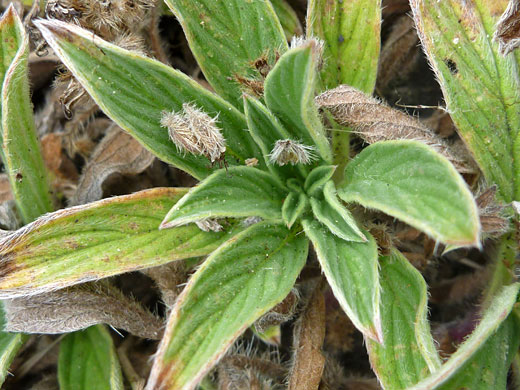Common names:
Sand dune scorpion weed, silvery phacelia
Family:
Scientific name:
Phacelia argentea
Main flower color:
Range:
Coastal areas of far north California and south Oregon
Height:
Between 4 and 17 inches
Habitat:
Coastal sand dunes and beach margins
Leaves:
Obovate to elliptic, up to 4.5 inches long, on short stalks; thick and bristly-hairy
Season:
May to August
Phacelia argentea is an uncommon species, found only in a few dozen locations in southwest Oregon and northwest California, occurring beside the coast in sandy habitats. In common with many coastal plants, the leaves are thick and fleshy, and like the stems, are covered by long, silky, non-glandular hairs. Leaves have prominent veins. Basal leaves may have a pair of small lobes at the lower end, but most leaves are unlobed. Stems are thick, and freely branching, generally growing at an angle or close to the ground.
The calyx is also hairy, and is divided into five, somewhat unequally shaped lobes, narrowly ovate in shape, with pointed tips. The white to cream-colored, bell-shaped corolla opens to five broad lobes, curving outwards when fully open. At the center are five protruding white stamens and a two-lobed style.
The calyx is also hairy, and is divided into five, somewhat unequally shaped lobes, narrowly ovate in shape, with pointed tips. The white to cream-colored, bell-shaped corolla opens to five broad lobes, curving outwards when fully open. At the center are five protruding white stamens and a two-lobed style.
All Contents © Copyright The American Southwest | Comments and Questions | Contribute | Site Map


